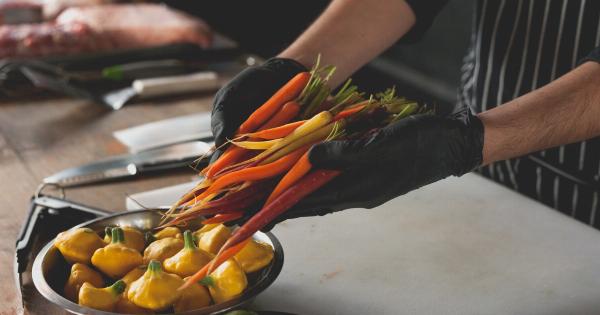When it comes to managing our groceries and food items, having a clear idea of the total volume of the food storage area in our fridge can be extremely useful.
Understanding how much space we have available for storing perishables, leftovers, and meal preps ensures we make the most efficient use of our refrigerator. In this article, we will explore the importance of knowing the total volume of our food storage area in the fridge and how we can calculate it.
Why is it important?
The total volume of the food storage area in your fridge matters for several reasons. Firstly, it helps you determine how much food you can store at a given time.
This is crucial for meal planning, especially if you have a large family or frequently entertain guests. Knowing the available space allows you to adjust the quantity and size of the groceries you purchase.
Additionally, understanding the total volume helps you organize your fridge more efficiently. You can arrange your items in a way that maximizes storage capacity and minimizes food waste.
By optimizing the arrangement, you can easily identify and access different food items, making your meal preparation and cooking experience hassle-free.
Calculating the total volume
To calculate the total volume of the food storage area in your fridge, you’ll need a measuring tape or ruler, a notepad, and a pen. Follow these steps:.
Step 1: Empty your fridge completely. Take out all the shelves, drawers, and any removable parts.
Step 2: Measure the length, width, and height of all the empty compartments. Record these measurements in your notepad.
Step 3: Calculate the volume of each compartment by multiplying the length, width, and height measurements together.
Step 4: Add up the volumes of all the compartments to get the total volume of your food storage area.
Step 5: Write down the total volume for future reference, or stick a note to the inside of your fridge for easy access.
Organizing your fridge efficiently
Now that you know the total volume of your food storage area, it’s time to organize it effectively. Here are some tips to maximize the space:.
1. Categorize: Divide your fridge into zones – one for fruits and vegetables, one for dairy products, one for beverages, and so on. This way, you can easily locate items and avoid rummaging through the entire fridge.
2. Utilize containers and organizers: Use clear plastic bins or trays to group similar items together. This prevents smaller items from getting lost or forgotten in the back of the fridge, and also makes cleanup easier.
3. Proper shelving: Adjust the shelves in your fridge to accommodate taller items. This prevents wasted vertical space and allows for better organization.
Maintaining cleanliness and freshness
Keeping your fridge clean and fresh is essential for food safety and longevity. Here are some important tips:.
1. Regular cleaning: Wipe down the shelves and drawers regularly to remove any spills or food residue. A clean fridge not only enhances freshness but also helps you identify items that have passed their expiration dates.
2. First In, First Out (FIFO): When placing new groceries in your fridge, ensure that older items are pushed to the front. This practice promotes rotation, reducing the chances of food wastage.
3. Check temperature: Keep a thermometer in your fridge to monitor the temperature. It should ideally be set between 34°F and 40°F (1°C to 4°C) to maintain the freshness of your food.
Conclusion
Knowing the total volume of the food storage area in your fridge is incredibly useful for managing groceries, organizing your fridge, and minimizing food waste.
By following the steps outlined in this article, you can calculate the total volume and optimize your fridge’s space to make the most of your storage area. Remember to regularly clean and maintain your fridge to ensure food safety and freshness.




























